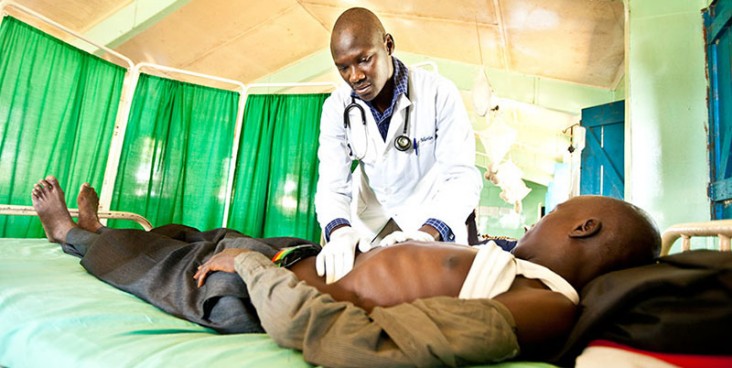- What We Do
- Agriculture and Food Security
- Democracy, Human Rights and Governance
- Economic Growth and Trade
- Education
- Environment and Global Climate Change
- Gender Equality and Women's Empowerment
- Global Health
- Humanitarian Assistance
- Transformation at USAID
- Water and Sanitation
- Working in Crises and Conflict
- U.S. Global Development Lab
Speeches Shim

At a Glance
An estimated 2 billion people – one-third of the global population – are infected with tuberculosis (TB). Each year, 9.6 million people develop TB and more than 1.5 million people die, devastating families and communities worldwide. Of the approximately 37 million people living with HIV, more than one-third are also infected with TB. In fact, TB is the leading killer of people with HIV, accounting for 1 in 4 HIV-related deaths.
Ninety-five percent of all TB cases and 98 percent of all TB deaths occur in developing countries. The majority of countries with very high TB prevalence rates are in Africa. Africa also has the highest rates of TB and HIV co-infection. In some countries in sub-Saharan Africa, up to 80 percent of individuals with active TB disease are also people living with HIV.
TB and HIV/AIDS co-infections are also of growing concern in Asia, where two-thirds of TB-infected individuals live and where TB now accounts for 40 percent of AIDS-related deaths. Eastern Europe and the former Soviet Union have the fastest growing HIV epidemics in the world, a factor further exacerbating the expanding problem of multidrug-resistant TB (MDR-TB) and extensively drug-resistant TB in these regions.
HIV and MDR-TB are a particularly deadly combination — people living with HIV are more likely to develop TB, and those with MDR-TB are more likely to die, even if they are diagnosed and receive treatment.
Because of the significant risk to individuals and programs, addressing these dual epidemics has been identified as a high priority for the U.S. President’s Emergency Plan for AIDS Relief (PEPFAR) and for HIV and TB country programs worldwide. Targeting HIV-associated TB and reducing co-morbidity and mortality are outlined as critical in the PEPFAR Blueprint for an AIDS-Free Generation: Roadmap for Smart Investments [PDF, 2.8MB].
“We cannot win the battle against AIDS if we do not also fight TB. TB is too often a death sentence for people with AIDS.”
— Nelson Mandela
USAID’s Response
As outlined in the U.S. Government's Global TB Strategy (2015-2019), the U.S. Government will partner with affected countries and international organizations to reach every person with TB, cure those in need of treatment, prevent new infections, and curb the spread of the disease. As the lead implementing agency, USAID will:
- Work to reduce TB incidence by 25 percent from 2015 levels
- Successfully treat at least 13 million TB patients
- Initiate appropriate treatment for at least 360,000 MDR-TB patients
- Provide antiretroviral therapy (ART) to 100 percent of registered HIV-infected TB patients by 2019
USAID is addressing the challenges of TB and HIV by working with its partners to implement collaborative TB-HIV activities in accordance with the WHO Policy on Collaborative TB/HIV Activitiesincluding:
- Assisting in establishing mechanisms for coordination of TB and HIV and AIDS activities and services
- Decreasing the burden of TB in people living with HIV
- Decrease the burden of HIV in individuals with active TB
- Initiate early antiretroviral treatment for PLHIV with active TB disease to increase survival and improve quality of life
USAID also partners with the Global Fund to Fight AIDS, Tuberculosis and Malaria (Global Fund) and with affected countries to maximize the impact of the Global Fund's TB and TB/HIV grant portfolio of approximately $6 billion across 100 countries. USAID works closely with countries to ensure their Global Fund grants support the most important TB interventions to prevent, diagnose, and treat more TB, MDR-TB and TB/HIV patients, as well as improve access to high-quality TB prevention, diagnosis, treatment, and care services.
Additional Resources
To learn more about how USAID works closely with host countries, other U.S. Government agencies and international partners to reduce the morbidity and mortality associated with TB and TB-HIV, visit:

Comment
Make a general inquiry or suggest an improvement.